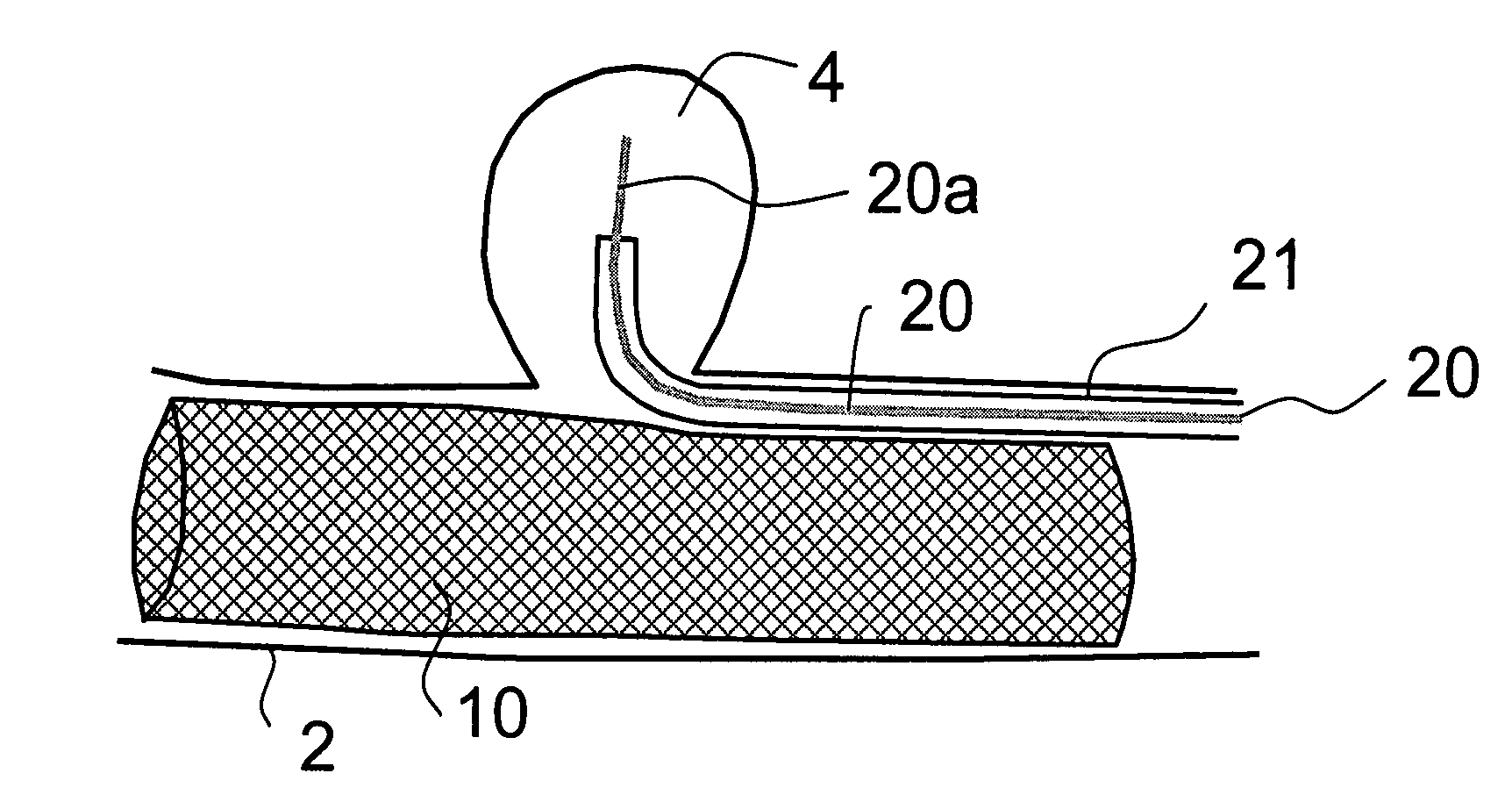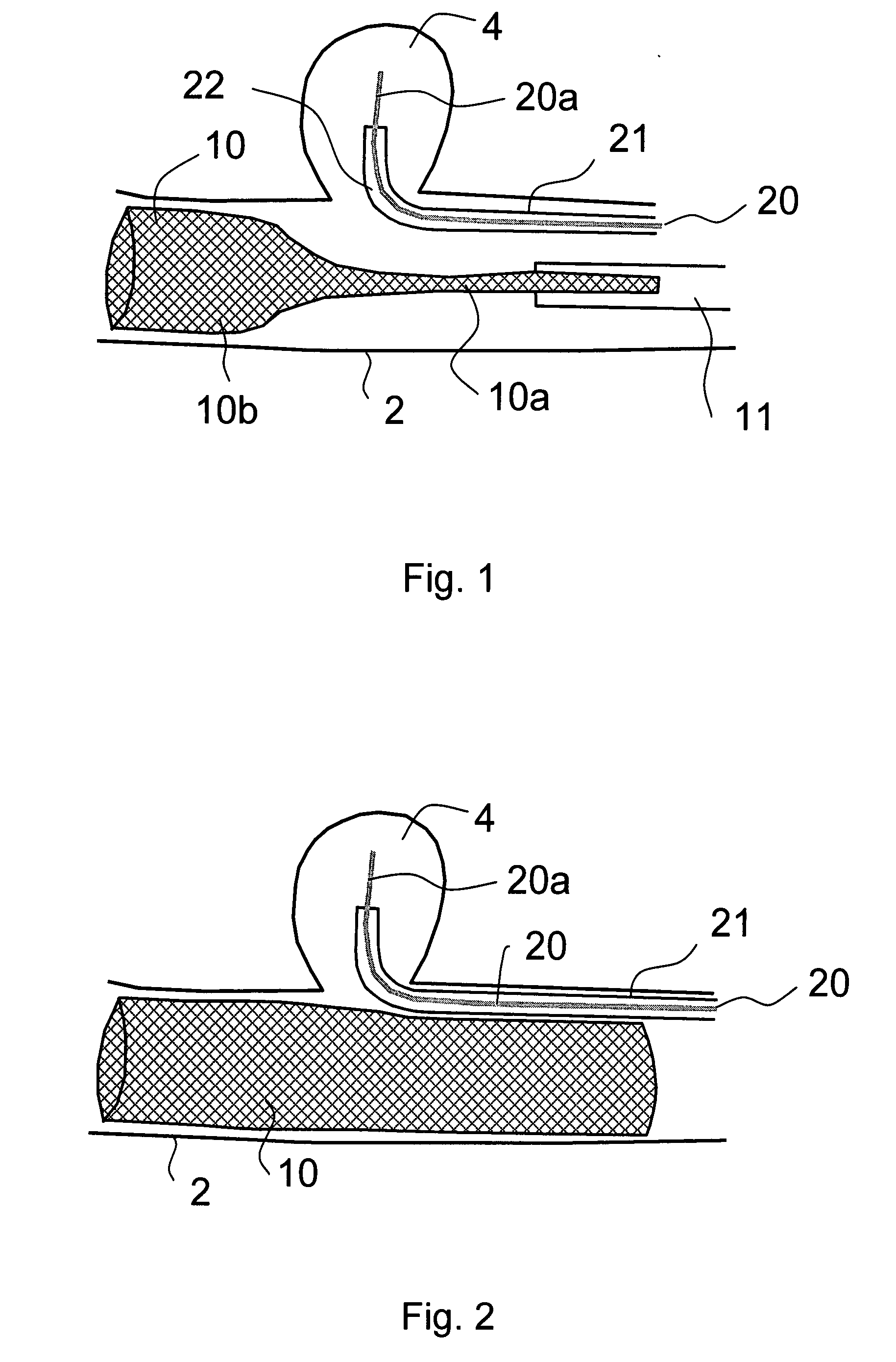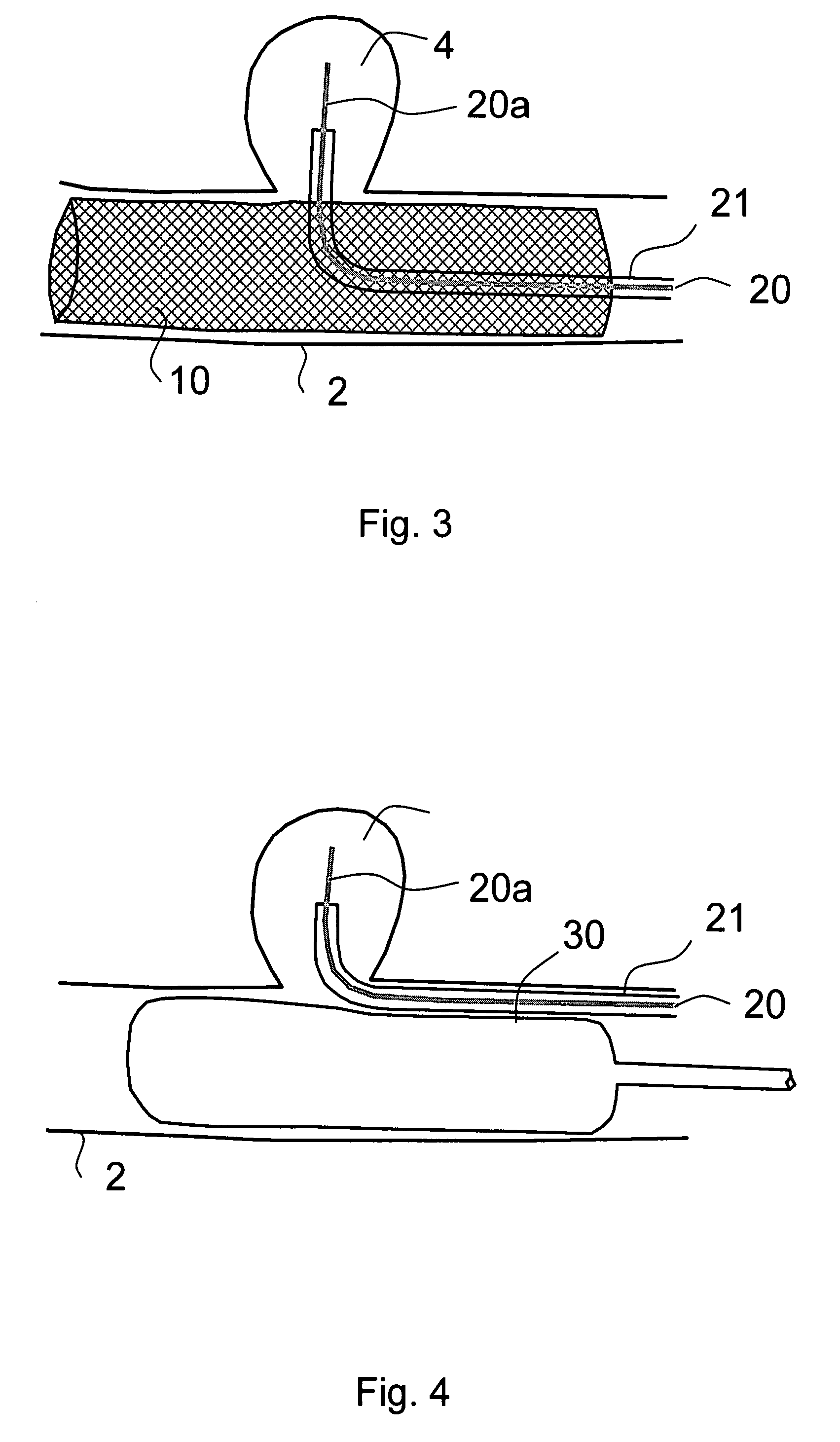Methods and devices for reducing or blocking blood flow to a selected blood vessel or part thereof
a technology of blood flow and which is applied in the field of methods and devices reducing or blocking blood flow to a selected blood vessel or part thereof, can solve the problems of preventing adequate tissue scarring and healing of the aneurysm pouch and the neck, and the need to accelerate the coagulation of blood within the aneurysm, so as to prevent thermal damage to the arterial wall and stop the blood flow
- Summary
- Abstract
- Description
- Claims
- Application Information
AI Technical Summary
Benefits of technology
Problems solved by technology
Method used
Image
Examples
Embodiment Construction
[0036]As indicated earlier, the present invention involves a method, and also medical devices, for reducing or blocking blood flow to a selected blood vessel, or a selected part of a wall thereof, particularly for treating an aneurysm malformation, an arteriovenous or a dural malformation, or blood vessel feeding a tumor by using a minimally-invasive procedure to create a platelet rich thrombus in the aneurysm as shown in FIG. 1. The novel method also uses an expandable member to prevent emboli from entering the blood stream. The drawings illustrate several techniques which can be used for implementing the method. While the description below refers to the treatment of an “aneurysm”, it is to be understood that the methods described are applicable to the treatment of other malformations in blood vessels, such as arteriovenous and dural malformations, and also to block blood vessels feeding tumors.
[0037]In some described preferred embodiments of the present invention, the expandable m...
PUM
 Login to View More
Login to View More Abstract
Description
Claims
Application Information
 Login to View More
Login to View More - R&D
- Intellectual Property
- Life Sciences
- Materials
- Tech Scout
- Unparalleled Data Quality
- Higher Quality Content
- 60% Fewer Hallucinations
Browse by: Latest US Patents, China's latest patents, Technical Efficacy Thesaurus, Application Domain, Technology Topic, Popular Technical Reports.
© 2025 PatSnap. All rights reserved.Legal|Privacy policy|Modern Slavery Act Transparency Statement|Sitemap|About US| Contact US: help@patsnap.com



